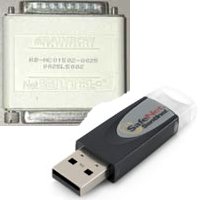Help and Support items
How should a scale indicator be set up for use with PDOX or tWeigh ?

- Ideally, it should be setup to send the Gross Weight out on a
continuous basis, about 1 time per second. The weight data string should consist of
G 999999 lb[CR][LF]
The typical settings are 9600 baud, 8 data bits, 1 stop bit, No parity.
Wiring Diagram
Indicator Computer(9 pin)
XMT 2
REC 3
GND 5
How to Trouble-Shoot a RS-232 Serial Connection ?

Serial communication can include computer to printer, computer to scale indicator, scale indicator to scale indicator, scale indicator to printer. When trouble-shooting, you want to determine if the host and remote devices are communicating with each other. Either one of the devices may not be communicating. Problems could include a bad serial port on the computer or remote device, a bad cable, incorrect wiring, incompatible baud rates, etc. Various tests can be performed to determine which device is faulty.
Besides checking to see if the cable connecting both devices is connected properly, one method to test communication is to use a terminal program. Four of the most common are Terminal.EXE from Windows version 3.1 , HyperTerminal from Windows 95 and up , DOS Term.EXE, and ProComm Plus. Each of these programs require configuration before testing. Common parameters to set are the Com Port being used on the computer, baud rate, data bits, parity. The baud rate, parity, and data bits must match the remote device.
The first thing you may want to do, is to test the computer to see if it is sending and receiving data through it's serial port, using a loop-back test. This basically involves sending data out the serial port and looping it back into the same port. A loop-back adapter can be used for this test. If you do not have one, you can take a paper clip, bend it so that you can touch both pins 2 and 3 on the serial port. Then, using a terminal program, type some characters using the keyboard. Be sure that "Local Echo" is disabled. If you see those same characters being returned on the screen, this indicates that the computer serial port is functioning properly.
If the indicator is continuously sending out weight data, this data should appear in the terminal screen. If the indicator requires a request character before sending data, you can press Ctrl-E or an uppercase P on the computer keyboard. If the indicator receives this character it will send it's weight data. If you don't see any data on the terminal screen, this indicates the indicator is either not sending data, or the computer is just not receiving it.
I'm getting an error message when trying to generate a report.
The error says a number in the date field is not a valid integer.
Make sure you have entered the date using MM/dd/yyyy format.
Exit the PDOX program. Open PDOX again, and that should clear the problem.
You will also need to check the Short Date Format setting in the Regional & Language Options in Windows Control Panel.
Make sure it is set to MM/dd/yyyy format.
The error says not enough memory to complete operation or something about a rpttemp table is full and cannot continue. Close the program and try running the Windows Disk Cleanup utility, and remove any temporary and unwanted files. After this is finished, restart the software and try the report again.
How do I modify the scale ticket layout ?
Using Windows Explorer, find the following file:
For a PDOX ticket, look in C:\TSWA\Pdox5\Tktrpt\pdoxtkt.tkt
For a tWeigh ticket, look in C:\TSWA\tWeigh\Tktrpt\tweightkt.tkt
Open that file using Notepad or Wordpad. Any of the text in the file layout can be moved to a different position.
Fields used by PDOX and tWeigh are enclosed in curly brackets { }. After making your desired changes, make sure to save the file.
There is a truck stuck "in-yard" without a customer ID. How do we get it out ?
Contact the Software support group for assistance.
PDOX/tWeigh will not recognize my software security key

If you have installed the software on a new computer,
you may need to install the newest security key driver files.
After downloading the file, run it to install the drivers. If you don't need
a new driver, the key may be bad. Contact Software Support personnel at 615-356-8785 or support@tswa.com .
Remote access for our Software Support Group
Install a free software program that allows remote access by our Software Support personnel.
After running the software, contact the Software Support personnel at 615-356-8785.


